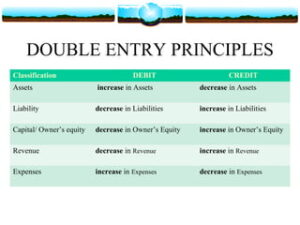Principles Of Double Entry SS1 Book Keeping Lesson Note
Download Lesson NoteTopic: Principles Of Double Entry

The principle states that for every debit entry, there must be a corresponding credit entry and
vice versa. It is the foundation of bookkeeping. The principle operates on the basis that every financial transaction must have two aspects i.e.:
Debit: Receiver’s account
Credit: Giver‘s account
Double entry is the act of recording business transactions twice in the books of account.
BENEFITS OF DOUBLE ENTRY
- It provides complete records of business transactions.
- It reduces the risk of fraud and facilitates the correction of errors.
- It provides a basis for the test of arithmetical accuracy of the accounting records.
- It is a means of providing financial information that may be the product of the accounting process.
- Double entry aids the effective implementation and review of the internal control system of any organization.
ILLUSTRATION ON THE PRINCIPLE OF DOUBLE ENTRY
- Jan 1 Mr Chidera started the business with N10,000
Effect
Increase in capital: Capital account
Increase in asset: Cash account
Action required: Dr Cash account-Receiver
Cr Capital account -Giver
- Jan 2 Paid N450 cash for rent
Effect
Increase in expenditure: Rent account
Decrease in asset: Cash account
Action required: Dr Rent account-Receiver
Cr Cash account-Giver
- Jan 3 bought office equipment N600, 000 by cheque
Effect
Increase in asset: Office Equipment account
Decrease in asset: Bank account
Action required: Dr Office Equipment account-Receiver
Cr Bank account-Giver
- Jan 8 Withdrew cheque for private use N2000
Effect
Increase in Drawings: Drawings account
Decrease in asset: Bank account
Action required: Dr Drawings account-Receiver
Cr Bank account-Giver
- Jan 9 Withdrew N600 cash from the bank for office use
Effect
Increase in asset: Cash account
Decrease in asset: Bank account
Action required: Dr Cash account-Receiver
Cr Bank account-Giver
- Jan 10 Received loan of N20,000 cash from Chinaza
Effect
Increase in asset: Cash account
Increase in liability: Loan account
Action required: Dr Cash account-Receiver
Cr loan account-Giver






















